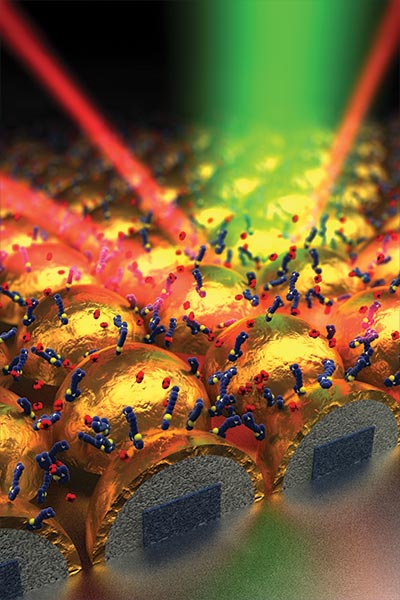
Imagine testing for cancers, hepatitis and tuberculosis as quickly, easily and inexpensively as today’s home pregnancy tests and blood glucose monitoring strips. Cyclone engineer Meng Lu is using the power of microfabrication to create state-of-the-art, on-demand diagnostic technology.
Lu, an assistant professor in both electrical and computer engineering and mechanical engineering, says the key to creating an at-home disease sensor is altering a common at-home material: paper. In a project supported by a National Science Foundation CAREER Award, he is developing the first sensor that uses engineered paper to combine the two parts of biomarker detection – sample preparation and detection – into one small sensor.
“Normal paper is made up of a random arrangement of cellulose fibers. By microfabricating the cellulose nanofibers into controlled structures, we can use paper’s natural ability to move and filter liquids to separate out just the biomarker molecules we are interested in testing. Microfabricating atoms also allows us to create unusual optical responses not found in everyday paper.”
The technique, called optofluidic paper, offers significant advantages over traditional diagnostic tests. Lu’s sensor will be able to test for multiple biomarkers at the same time, just by building several different types of nanostructures of atoms into one paper test strip. And optofluidic sensors detect biomarkers at very low concentrations, enabling earlier disease detection – and perhaps allowing patients to avoid more invasive tests.
Lu will pair the sensor with a small, portable, inexpensive device that quickly measures optical feedback from the engineered paper and turns it into easy-to-read results. “We will engineer the paper to adhere to biomarker molecules, so the texture of the paper will change when it comes in contact with even very small quantities of the biomarker,” says Lu. “We can then measure changes in how the light interacts with the paper to see if the biomarker is present.”
What’s more, since Lu’s sensors are paper- based, they will be low-cost and disposable.
“Optofluidic paper sensors fill a significant need in areas with limited medical facilities, such as rural communities, developing countries and military deployments,” says Lu. “This technology will bring inexpensive and reliable testing right to patients’ bedsides.”